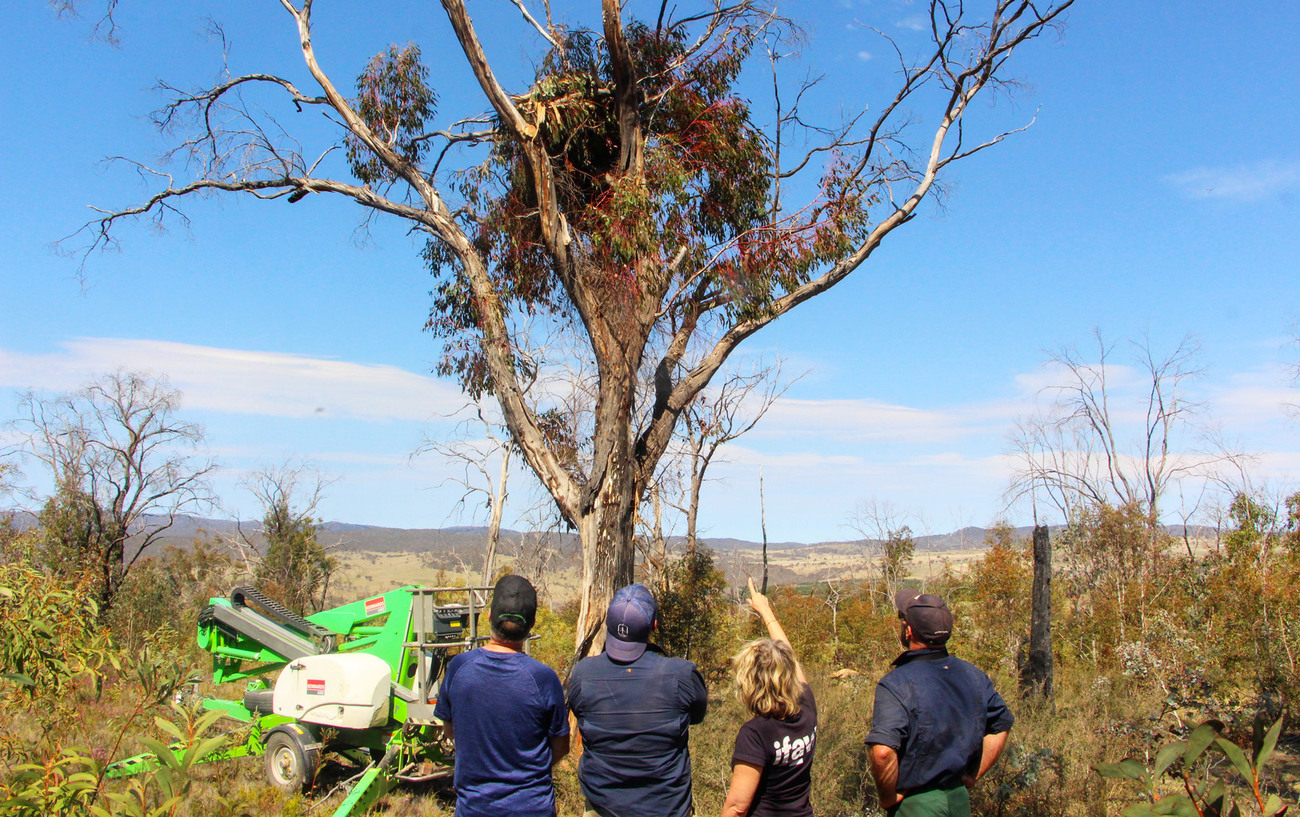Restoring Two Thumbs Wildlife Sanctuary
Restoring Two Thumbs Wildlife SanctuaryBushfire recovery works help bring burnt sanctuary back to life
Bushfire recovery works help bring burnt sanctuary back to life

6 November 2023 – In a world-first, innovative wildlife dens have been installed in a sanctuary destroyed by Australia’s Black Summer bushfires to help restore it to the haven it once was.
Two Thumbs Wildlife Trust Sanctuary in southern NSW was a thriving habitat for wildlife but the 2020 fires left the landscape struggling to bounce back and hundreds of animals homeless. IFAW has been working with Habitat Innovation and Management to restore the 724-hectare property by encouraging native wildlife to return to the sanctuary.
The team recently installed ten dens to encourage small to medium marsupials like native quolls, bandicoots, antechinus, and echidnas to set up home. A further ten will be installed later this year.
“The fires that tore through the sanctuary destroyed the hollow logs the animals live in, but the new dens provide a ready-to-move-in solution and provide refuge from climate related events. It’s a win-win for wildlife,” IFAW Wildlife Campaigns Manager Josey Sharrad said.
“The fires left a huge shortage of suitable habitat for so many species so this work we’re doing is helping to restore the ecosystem from the ground up.”
Rocks and sticks are placed onto the dens to camouflage them into the landscape and to insulate them, so they stay cool in summer and warm in winter.
“Spotted-tail quolls have been sighted by locals in the region and the pre-fire habitat at Two Thumbs would have been suitable to support these native predators. This installation of Habitech marsupial dens is a world first providing important refuge sites and allow the quolls to repopulate the sanctuary,” Habitat Innovation and Management Director Mick Callan said.
Several raptor nesting platforms were also constructed to provide safe sites for the large birds to create nests. Experts believe that every raptor nest would have been burnt during the Black Summer bushfires.
The platforms will benefit everything from the biggest raptors like wedge-tailed eagles to smaller ones such as the little eagle, brown falcon, brown goshawk, collared sparrow hawk, Australian hobby, and peregrine falcon.
The work is part of IFAW’s bushfire recovery project in collaboration with Habitat Innovation and Management. Over the past year, 125 nest boxes have been installed for birds, gliders, and microbats, 2,000 native grasses and trees have been planted, and soil erosion control and fencing work was undertaken to aid landscape recovery.
Animals have already been seen taking up residence in the nest boxes with gliders and rosellas captured on camera.
Two Thumbs Wildlife Trust Sanctuary owner James Fitzgerald said it has been encouraging to see life returning to the sanctuary, which is on Ngarigo country.
“I’ve noticed a clear difference in the past year. For years after the Black Summer bushfires, it was a ‘ghost forest’—the movement and music of birds and animals was missing. It is still a long road, but now birds are singing, koalas are bellowing, and sounds of life can be heard again,” Mr Fitzgerald said.
“For many Australian birds and marsupials, the destruction of hollow trees during the bushfires is restricting their ability to repopulate bushfire areas. The very important work that IFAW and Habitat Innovation and Management are doing at my sanctuary, installing nest boxes and quoll dens and building raptor platforms, is enabling many species to repopulate the vast firegrounds.”
ENDS
Press Contact
IFAW Australia
Dominica Mack
m: +61 (0) 460 432 901
e: dmack@ifaw.org
Notes:
- Photos and video available here.
- The Habitech marsupial dens were designed and developed by Habitat Innovation and Management with funding assistance from Fortescue Metals Group and will soon be deployed on FMG sites in the Pilbara for Northern Quolls.
- The Habitech nest boxes and marsupial dens are made from composite material, are modular, highly insulated, recyclable, weather resistant, and designed to last decades.
Related content
Our work can’t get done without you. Please give what you can to help animals thrive.